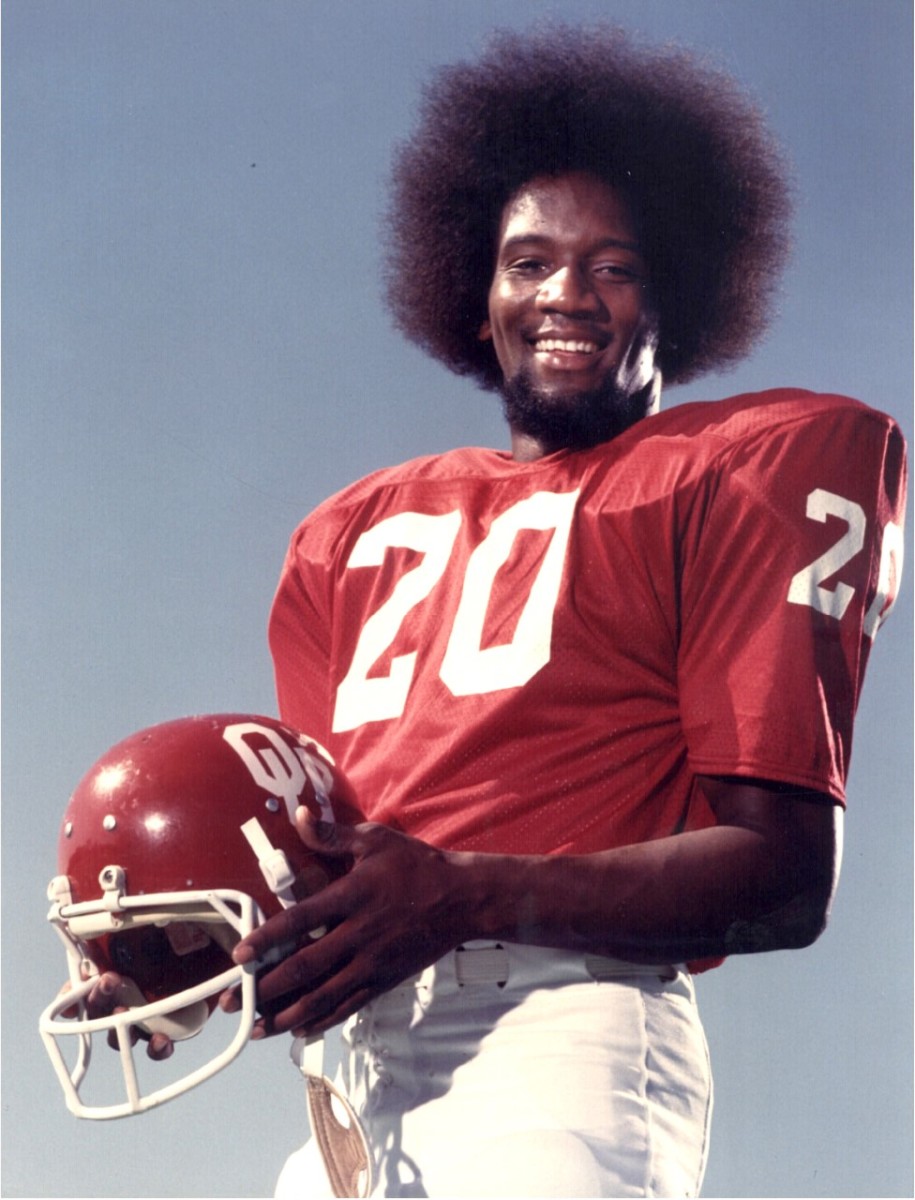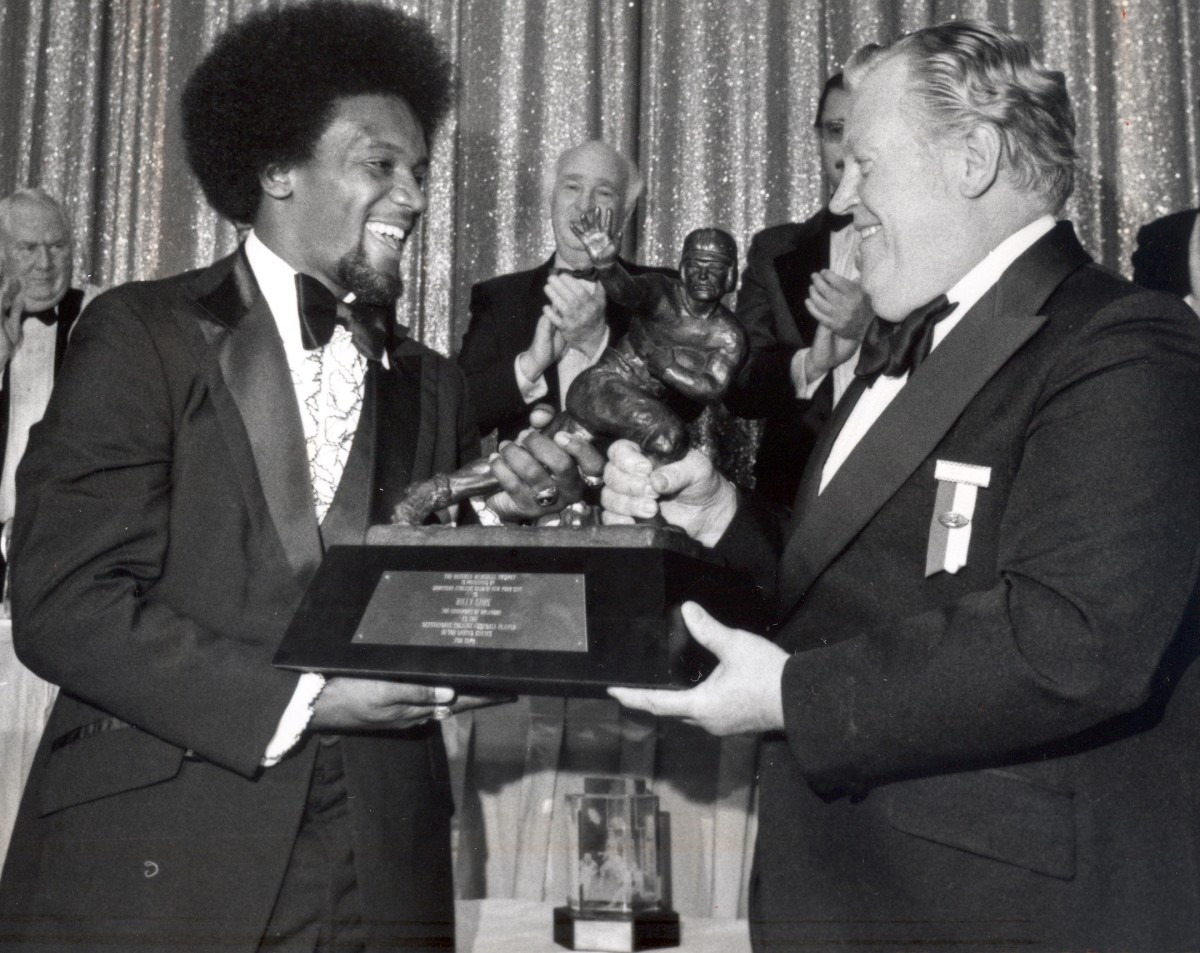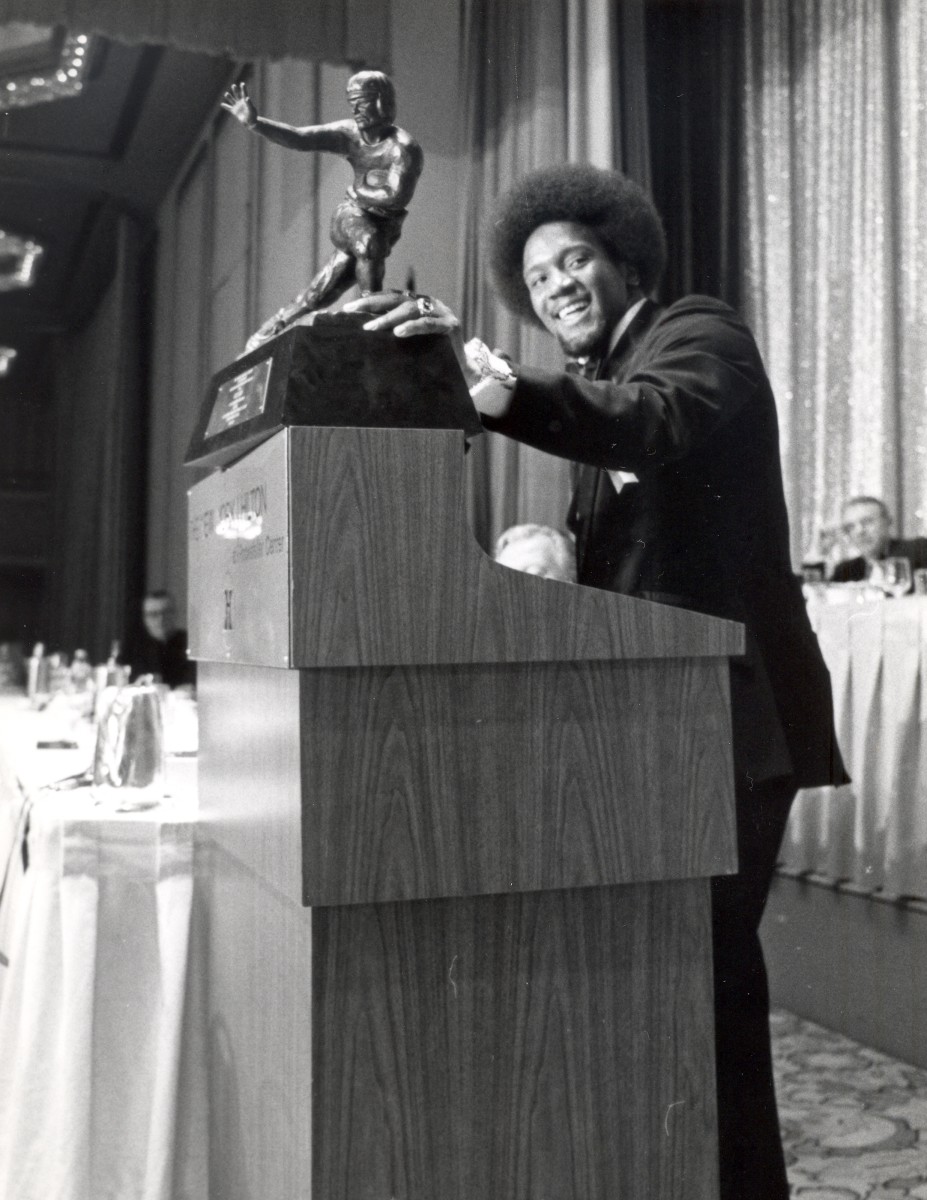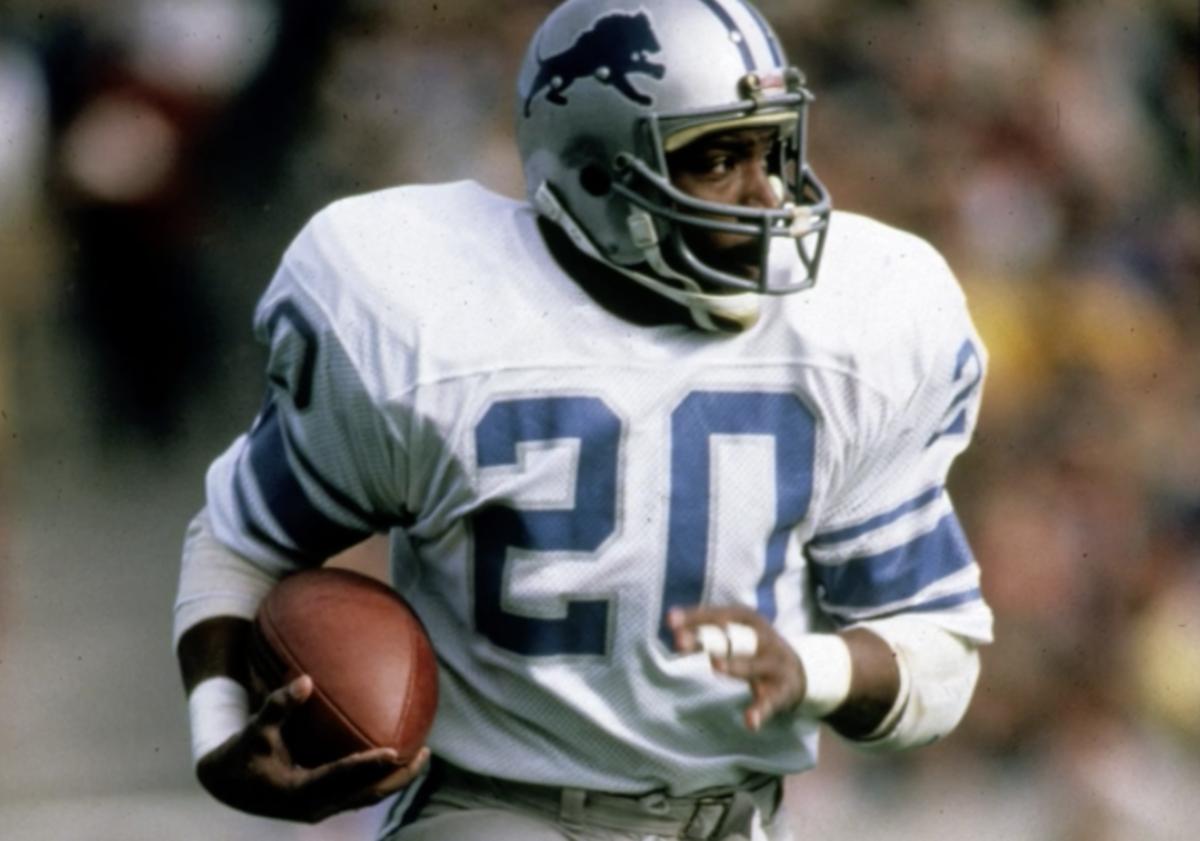Heisman memories: How Did Billy Sims Ever Win the Heisman? How Did he Not Win Two?

Although Billy Sims was the No. 1 running back in Texas, leaving Oklahoma with a Heisman Trophy under his arm was almost inconceivable considering the circumstances of his arrival and early days as a Sooner.
He was committed to Baylor coming out of Hooks, TX, and was determined to honor that pledge.
He ran the ball only 15 times as a true freshman — well down the depth chart behind greatness like Joe Washington.
He sustained a season-ending injury in the opener of his sophomore season, thought he had fallen out of favor with the coaching staff and decided to quit the team and return to his job pumping gas at the Conoco station in Hooks.
But it was always Barry Switzer who brought Sims back from the depths of despair.
It was Switzer, having hosted Sims at OU a week earlier — and having been told by the dynamic young star he was staying with Baylor — who called Sims from a Folsom Field pay phone at halftime of the Sooners’ game at Colorado and told him Oklahoma was the place for him.
It was Switzer who imparted some fatherly advice to Sims and convinced him to come back to Norman after a despondent Sims quit the team and went home.

But it was offensive lineman and eventual Outland Trophy winner Greg Roberts — Sims’ roommate — who, two years later, knocked on the door of Sims’ botany class to tell the running back he had won the 1978 Heisman Trophy.
Sims famously recalls that he couldn’t leave to go take the phone call from New York because his botany professor was so strict and wasn’t much of a football fan.
But botany soon took a backseat. Sims broke 100 yards 11 times during the 1978 season and joined Billy Vessels (1952) and Steve Owens (1969) as Oklahoma’s third Heisman Trophy winner.
READ MORE HEISMAN MEMORIES
Sims had just two seasons as Switzer’s primary ball carrier, and both were spectacular: 1,896 yards and 22 touchdowns as the Heisman winner in 1978, and 1,670 yards and 23 touchdowns as the Heisman runner-up in 1979. Those two yardage totals still rank No. 2 and No. 6 in school history.
He set multiple school records, including career rushing yards (4,118), 200-yard games (seven), single-season rushing yards (1,896) and single-season rushing touchdowns (23). His single-season yardage mark stood until Adrian Peterson rang up 1,925 in 2004 (25 yards ahead), and his career total stood until Samaje Perine reached 4,122 in 2016 (four yards ahead).
Sims’ two highest single-game yardage totals came in his last two regular season games in 1979: 282 at Missouri, then 247 against Nebraska.

Sims was runner-up to USC’s Charles White in the ’79 Heisman voting, but Switzer feels strongly that he should have joined Ohio State’s Archie Griffin as the second repeat winner. Unfortunately for Sims, too many Heisman voters mailed in their ballot prior to his torrid finish against Mizzou (Nov. 17) and Nebraska (Nov. 24).
For good measure, Sims racked up 164 yards against Florida State in the Orange Bowl in his final game.
The 5-foot-11, 210-pound Sims was the No. 1 overall pick of the Detroit Lions in the 1980 NFL Draft and was an instant sensation, rushing 313 times for 1,303 yards and 13 touchdowns and catching 51 passes for 621 yards and three touchdowns.
He was named NFL Offensive Rookie of the Year and made the Pro Bowl, then topped himself with 1,437 yards, 13 rushing TDs and another 451 receiving yards and two scores in 1981 as he returned to the Pro Bowl.
Sims made a third straight Pro Bowl in the 1982 strike-shortened season with 639 rushing yards and four TDs and another 342 receiving yards in just nine games.

In 1983, Sims ran for 1,040 yards and seven touchdowns and added 419 yards receiving in 13 games.
Halfway through the 1984 season, Sims was on pace for his second-best season — 85.9 yards per game; second only to his 1981 total of 102.6) and broke the franchise record for career rushing yards on his first carry in a game at Minnesota when he sustained a major knee injury on the rough Metrodome turf.
Sims’ injury, simply put, ended his career. He told media after his surgery that he’d be back in 1985, and spent most of that year rehabbing the knee but the damage was too extensive. He eventually returned to nearly full strength, but his explosiveness never came back.
Now, 35 years later, Sims’ 5,106 NFL rushing yards ranks second in Lions history behind Barry Sanders, and many older Sooner fans still regard him as the best to ever do it in Norman.
